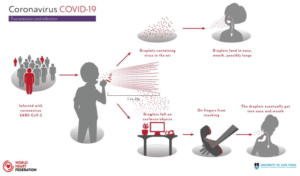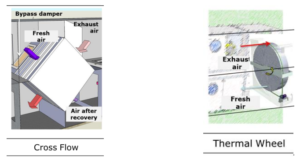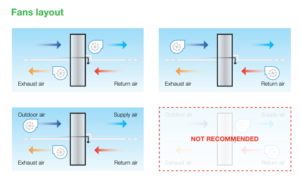1 Mar 2021
SARS-CoV-2 VS Heat Exchangers

SARS-CoV-2 can be transmitted in several ways. When we sneeze, for example, and we have another person in front of us, there is a very high risk of contagion because the particles could be breathed in by the person in front of us, or we can risk contaminating the surrounding objects which can then be touched by the others

Transmission by air, however, differs from transmission via infected droplets. The latter, in fact, refers to the presence of microbes inside the nuclei of the drops, particles with a diameter < 5μm, which can remain in the air for long periods of time and be transmitted to others over distances greater than 1m.
It is necessary to specify that, however, air transmission may be possible in specific circumstances, such as in cases of great crowding and low air exchange. In some very unlikely situations, moreover, the viral particles could enter the extracted air of the ventilation system and, if there are leak points, they could re-enter the building.
Even if transmission by air is very unlikely, and linked to specific situations, it is important to use an air / air heat exchanger, knowing its loss behavior.

SARS-CoV-2 VS plate heat exchanger
The main characteristics of a cross-flow plate heat exchanger:
– The air flows don’t mix: no cross contamination.
– Wide range of steps and patterns.
– Square size: 300-2410 mm.
– Air flow up to 100.000 m³/h.
– Efficiency between 50% and 80%.
– Low pressure drops.
In the plate heat exchanger, the losses are close to zero and, if there is a thermal bypass, it would be useful to open it to increase the circulation of fresh air. In addition, the air changes constantly, new air is always taken from the outside without re-using that already present in the environment.
SARS-CoV-2 VS rotary heat exchanger
The air loss in the rotary heat exchanger is due to two ratios:
– Outdoor air correction factor (OACF): ratio between air inlet volume divided by air outlet volume. With OACF>1 more air is transferred from renewal to extraction. With OACF<1, air is transferred from extraction to renewal.
– Exhaust air transfer ratio (EATR): percentage of exhausted air that comes back. It is detected by measuring the concentration of inert gas and represents the loss of exhaust air within the air flow, which is generally described as loss of internal exhaust air.
It is important to take into account the fan position, the position of the fans inside the ventilation unit, in order to have the air renewal side in overpressure. The following images show the possible heat exchanger/fan combinations, highlighting the suggested positions

For the correct operation of the rotary heat exchangers, equipped with purge sectors and correctly set, the loss rates are almost the same as those of the plate heat exchangers.
WE HAVE A VERDICT…
SARS-CoV-2: 0
HEAT EXCHANGERS: 1
THE HEAT EXCHANGERS WIN!!


